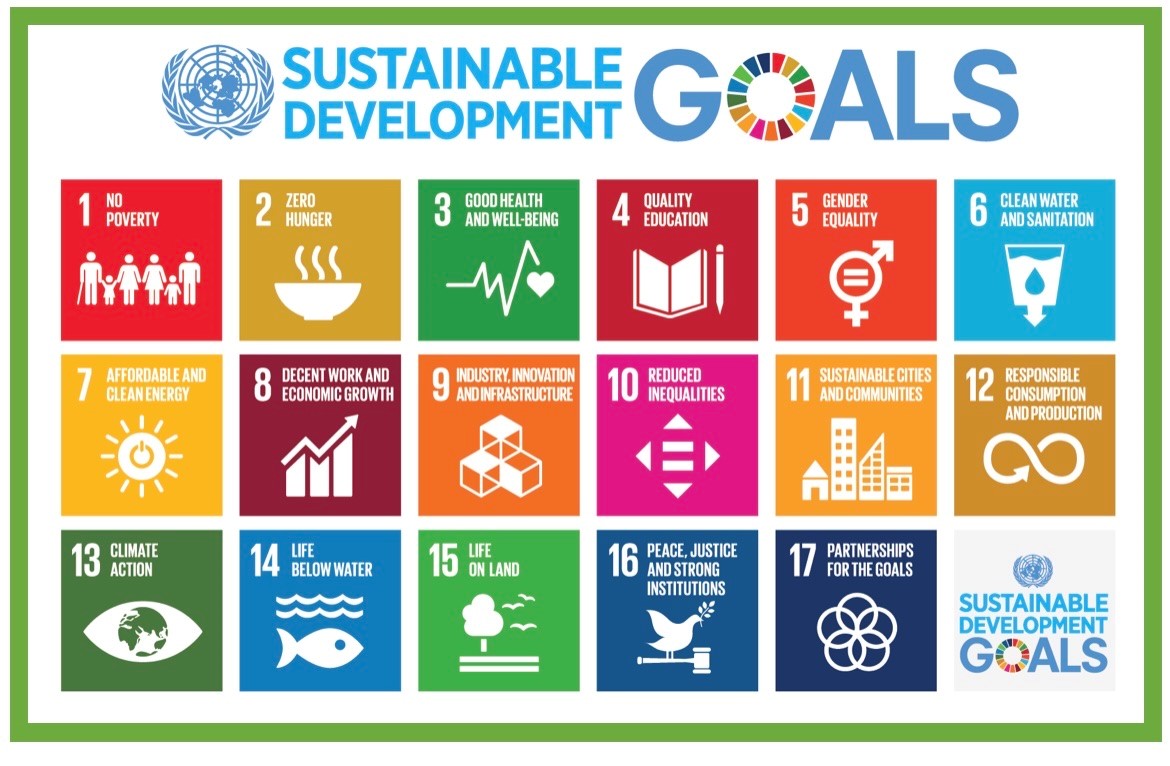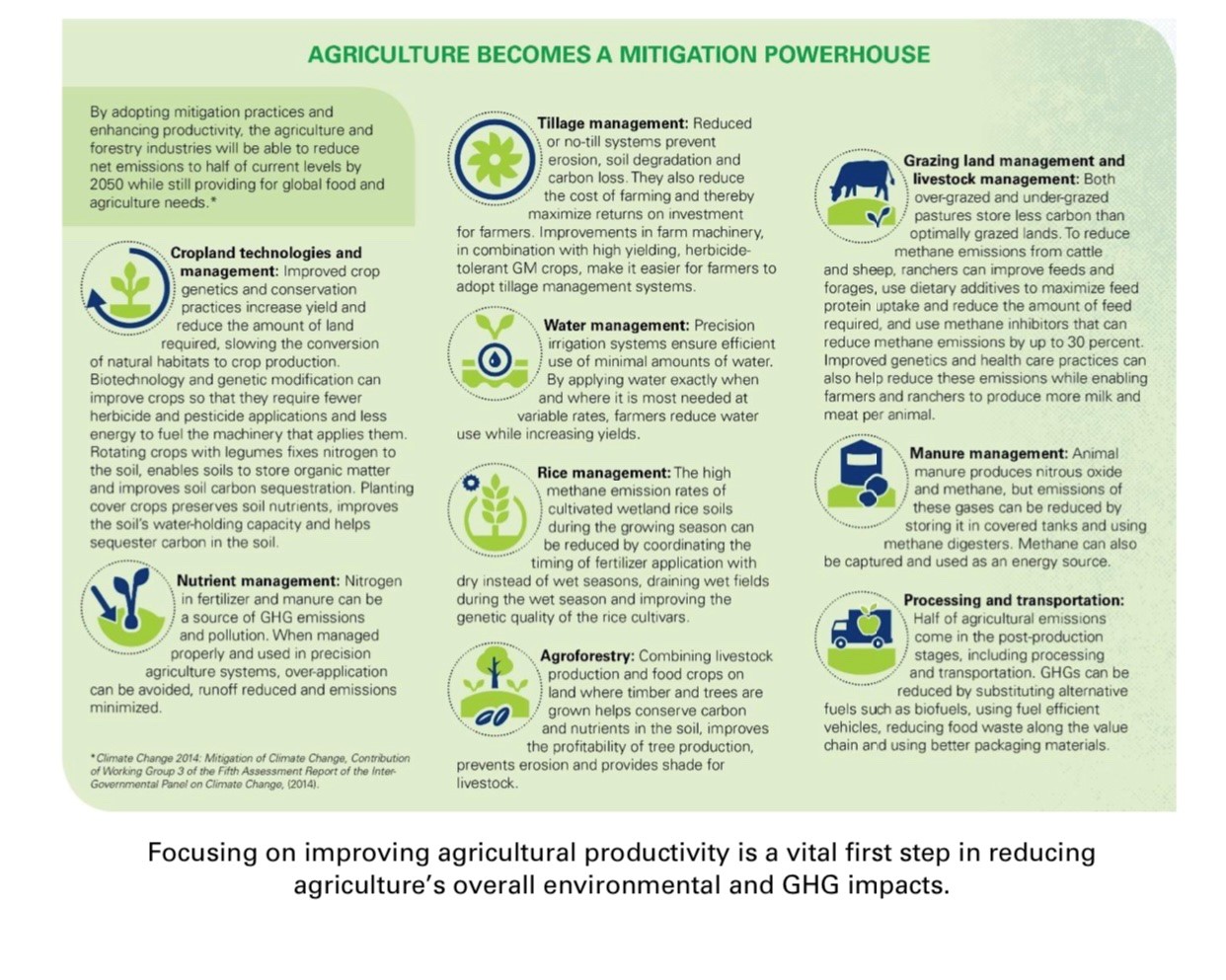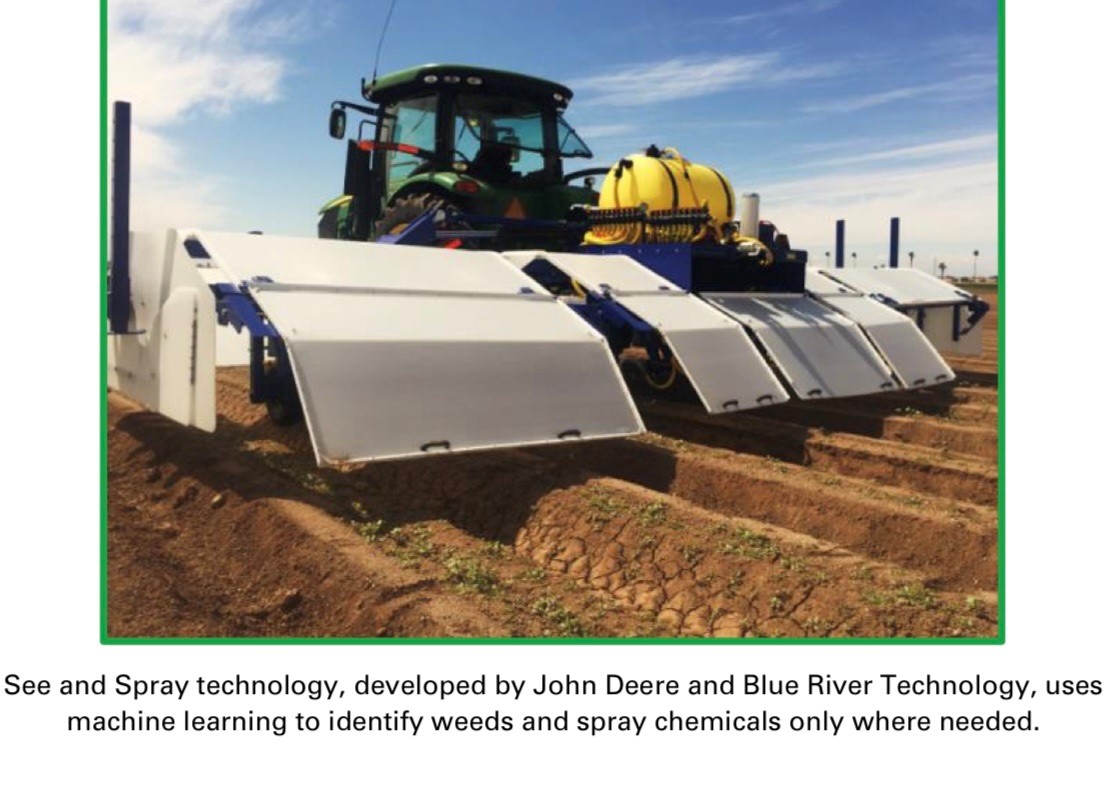

06/11/2025
The global food system stands at a critical juncture. It must not only feed a growing population - projected to reach 9.7 billion by 2050 but also do so in the face of escalating climate change. Traditional agricultural practices, which are major contributors to greenhouse gas (GHG) emissions and land degradation, are no longer viable. The solution lies in a transformative approach: Climate-Smart Agriculture (CSA).

Developed by the Food and Agriculture Organization (FAO) of the United Nations, CSA is an approach that helps manage agricultural landscapes to address three interconnected goals: sustainably increasing productivity and incomes, adapting and building resilience to climate change, and reducing and/or removing GHG emissions. It isn't a single technology or practice, but rather a flexible framework that's tailored to specific local conditions and challenges.
The three pillars of Climate-Smart Agriculture
The core of the CSA concept is its three-pronged approach.
Sustainably increasing agricultural productivity and incomes
This pillar focuses on boosting food security through more efficient and resilient production. CSA practices aim to maximize yields while minimizing resource use, such as water and nutrients. For instance, precision agriculture uses GPS, sensors, and drones to apply the exact amount of water, fertilizer, and pesticides needed, reducing waste and boosting output. Similarly, improved seed varieties that are more productive or resistant to drought and heat can significantly increase crop yields. These innovations help farmers produce more food on less land, improving their livelihoods and ensuring a stable food supply.

Adapting and building resilience to climate change
The second pillar recognizes that agriculture is among the sectors most vulnerable to climate change. CSA emphasizes building resilience into farming systems to withstand shocks like floods, droughts, and extreme temperatures. Agroforestry, the practice of integrating trees and shrubs into crop and animal farming systems, is a prime example. Trees can provide shade, reduce soil erosion, improve water retention, and offer additional income streams. Another key strategy is crop diversification, which involves planting a variety of crops instead of relying on a single one, thereby spreading risk and enhancing the farm's ability to cope with unpredictable weather patterns.
Reducing and/or removing greenhouse gas emissions
The final pillar tackles agriculture's role as a major emitter of GHGs. CSA seeks to lower the carbon footprint of food production by promoting practices that either reduce emissions or sequester carbon in the soil. For example, improved manure management in livestock farming can capture methane, a potent GHG, for use as an energy source. The practice of no-till farming, where soil is left undisturbed, can significantly reduce carbon emissions and build up organic matter in the soil, effectively turning farmland into a carbon sink. This "carbon farming" not only mitigates climate change but also improves soil health and fertility.

Challenges and the path forward
Despite its clear benefits, the widespread adoption of CSA faces several hurdles. A major challenge is the initial cost of implementing new technologies and practices, which can be prohibitive for smallholder farmers in developing countries. There's also a need for stronger policy frameworks, financial incentives, and knowledge-sharing platforms to support farmers in making this transition.
However, the momentum is building. International organizations, national governments, and private sectors are collaborating to scale up CSA through investment, research, and policy reform. The future of global food security and environmental sustainability hinges on our ability to transform our agricultural systems. Embracing Climate-Smart Agriculture is not just an option—it is a global necessity.
The global adoption of CSA faces several challenges. These include lack of knowledge of CSA technologies and limited access to resources by smallholder farmers, as well as a lack of adequate policies. There are also financial barriers to introducing CSA techniques due to high initial building costs.
Overcoming these barriers requires investments in education programmes, stronger institutional support and better access to CSA technologies. Organizations like CABI provide farmers with easy access to information on science-based solutions and training resources. These programmes empower farmers with the tools and knowledge needed to implement climate-smart practices, improving resilience and sustainability in agriculture.
Preparing farmers for the future of climate-smart agriculture
As climate change reshapes agricultural systems, preparing farmers for climate-smart practices is essential. This requires a coordinated effort in training, education, and policy support.
Training and education
Education plays a vital role in helping farmers transition to CSA. Through training programs, farmers can learn about sustainable techniques like conservation farming and water management and how to maintain the efficiency of crop production. They can also learn about the tools and technologies available to help them in their transition to CSA.
For example, CABI offers valuable free courses on topics such as sustainable soil management practices and water management, empowering farmers to adopt efficient techniques that enhance productivity in their agricultural system, while protecting natural resources.
Policy support and government role
Governments play a pivotal role in supporting farmers to adapt to climate change by providing the necessary tools, resources, and policy frameworks. Governments can help by funding research projects and providing farmers with adaptive tools and evidence-based information to face climate challenges, safeguarding food security and biodiversity.
For instance, the USDA and its Natural Resources Conservation Service (NRCS) have developed projects that address soil health, water conservation, and pest management. This USDA service provides farmers with technical assistance and financial incentives to adopt sustainable practices that protect both agricultural productivity and natural resources.

The Global Imperative for a Healthy Sustainable Planet
The United Nations Sustainable Development Goals (SDGs) establish targets for achieving inclusive economic growth, social development and natural resource conservation and biodiversity by 2030.
Sustainable agriculture practices and technologies contribute to many of the 17 SDGs by helping to end hunger and malnutrition, reducing post-harvest loss and food waste, mitigating climate change, providing clean energy, preserving biodiversity and promoting good health and gender equality.
Sustainable agriculture must satisfy human needs; enhance environmental quality and the natural resource base; sustain the economic vitality of food and agriculture systems and improve the quality of life for farmers, ranchers, forest managers, fishers, agricultural workers and society as a whole. But achieving these interconnected goals is a growing challenge, particularly in the face of a changing climate and pressure from growing global food and agriculture demand.
Agri-food production systems impact the natural resource base and are the source of nearly one quarter of global greenhouse gas (GHG) emissions. The majority of agricultural emissions are from deforestation and land use change (the conversion of forest to croplands or livestock grazing lands), and from methane emitted from livestock, along with poor soil management.
Agriculture is also impacted by climate change. Recent models show that with a 2° Celsius increase in global mean temperature (the temperature ceiling for a climate-safe planet), yields are expected to decrease, on average, 14 percent for maize, 12 percent for wheat, 6.4 percent for rice and 6.2 percent for soybeans.
Climate change also brings rising threats from the growing assault on crops by insect pests. When average global surface temperatures increase by 2° Celsius, models indicate the median increase in yield losses due to pest pressure is 46 percent for wheat, 19 percent for rice and 31 percent for maize.3 The Inter-Governmental Panel on Climate Change’s (IPCC) fifth assessment report confirms this strong linkage between warming and increased threats to agriculture from pests and disease.
Degraded soils, lack of clean water for agriculture and human consumption, failing crops and livestock and rising temperatures lay the groundwork for food crises and economic and political instability. Conflict, migration and drought are tightly interwoven and must be viewed through the lens of sustainability.
Agricultural production in the United States continues to evolve as consumers, investors, farmers and agribusinesses seek lower-carbon operations and better soil and water quality on farms and in watersheds.
By setting goals for reductions in greenhouse gas emissions, water use, soil erosion, land and energy use, and by entering into conservation partnerships, rice and pork farmers are making continuous improvements in stewardship and sustainability.
Precision agriculture is the use of data and technology to increase the productivity and profitability of agricultural operations, including crops, livestock, aquaculture, dairy forests and orchards. Precision agriculture is also a powerful tool that helps producers shift to precision conservation and reduce greenhouse gas emissions.
Farmers use tractors, combines and sprayers with global positioning system (GPS) devices and precision guidance satellite receivers that enable them to navigate for sub-inch accuracy in the field. Using equipment such as in-field monitors and sensors, farmers and farm service providers can record data on temperature, rainfall, soil conditions and plant growth, capturing information for analysis and to generate models that help them make good decisions about operations and investments.
Integrated software that contains data about their operations helps farmers precisely apply crop nutrients, control weeds and pests and add water only where it is needed for maximum yield and at lowest cost.
Remote sensing is widely used along with satellite imagery to collect data; unmanned aerial vehicles (drones) also collect data and are used to generate maps and assess crop health.
Precision systems enable each farmer to manage and track, year after year, progress towards maximizing the productivity of each field, while placing less productive areas into conservation or creating refuges for pollinators and wildlife.
For livestock operations, sensors on the animals can alert ranchers to the presence of a disease before it spreads throughout an entire herd. Livestock monitors check animals for breeding cycles and disease and track the amount of food and water consumed. Using their own data, precision systems help farmers raise healthier animals and manage grazing lands for sustainability goals. Farmers also invest in automated and computer-controlled barns that provide consistent temperatures and readily available feed and water.
In forest operations, remote sensing images can measure tree height and canopy information, as well as tree diameter and biomass as part of a carbon sequestration strategy. Estimating timber volume allows forest managers to make better decisions about where and when to harvest trees.
As a whole, precision systems can monitor, manage and optimize irrigation, farm vehicles, livestock, greenhouses and stables, aquaculture, forests and storage of crop and livestock products; such integrated systems can reduce energy, labor, and make the best use of scarce natural resources.
Nguyễn Thị Thu Thảo
(Source: The article was published on the Environment Magazine by English No. III/2025)
REFERENCES
1. https://globalagriculturalproductivity.org/
2. https://bioprotectionportal.com/